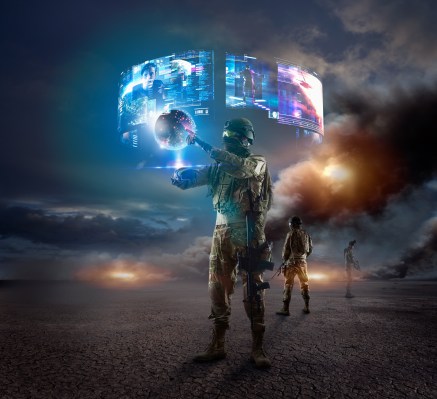Fifteen years ago, a team of scientists working at Johns Hopkins University was asked to do what seemed like the impossible: Design a headset that would create an image so immersive and realistic that it would allow anyone to experience what it feels like to be in a car — before that car actually exists. One of the most popular sedans in the U.S. was born this way.
It wasn’t until a couple of years ago that the popularity of virtual reality technology really took off. With video games, VR found a home in the world’s living room. Gamers were able to experience imaginary worlds, all from the comfort of their couches. There’s no sign of this slowing down: Business Insider estimates that shipments of VR headsets will grow at 99 percent annually between 2015 and 2020.
Indeed, VR is finding widespread adoption in design, education and new forms of entertainment almost every day. You’ve probably been hearing about it online, in the news and on social media. But before VR hit the mainstream, it was first and foremost an incredibly important resource for our armed forces — and still is today.
After decades of perfecting VR in military applications, we are finally making this concept of “inhabiting” a computer-generated environment work for home users. And, ironically, VR is going back out to the battlefield — but instead of training fighters, it’s being used to save the world from zombies.
VR’s start on the real-world battlefield
For years, high-end VR technology has helped soldiers. If it was too dangerous or too expensive, you trained in VR. You could learn the layout of buildings before setting foot into a dangerous situation. You could train to operate machinery and weapons, acclimate to new social situations and treat PTSD. Your team could train in battlefield simulations to help reduce casualties. Many of the immersive features that make VR so compelling today were honed in these early days in military applications.
Georgia-based Motion Reality has been training first responders, law enforcement and military personnel for many years. A wide-area, high-end tracking system determines the position of multiple trainees and their weapons in a large space. Motion Reality then uses this information to provide a training experience in hostile situations.
The key ingredients that make VR so compelling are the same regardless if you are saving the world in an arcade or preparing for a real-life battlefield.
The technology used by Motion Reality and others for military training has been critical to bringing VR to public spaces. While the popularity of VR has skyrocketed over the past year, it’s still inaccessible to many. Some don’t want to spend the money to buy high-end gaming PCs. Others don’t have the space in their homes to experience VR beyond a seated encounter. By bringing VR out of the home, the industry has infinite possibilities and new momentum.
VR is coming to a public space near you
For the first time, VR is hitting our public theme parks, arcades and movie theaters. An estimated two-dozen VR rollercoasters have debuted this summer in theme parks across North America, Europe and Asia. And companies like Zero Latency and The Void are debuting arcade-like experiences that mix real life and VR.
For decades, the industry has been building up the necessary knowledge and tools to take VR to the mainstream. The key ingredients that make VR so compelling are the same regardless if you are saving the world in an arcade or preparing for a real-life battlefield. Even more importantly, the technological requirements of public venues are almost identical to those used in military training. They require sophisticated multi-player tracking, easy cleaning between users, untethered experience functions and more.
Zero Latency, an emerging VR company out of Australia, uses wireless weapons and VR headsets powered by powerful backpack computers to allow for untethered walking in a simulated VR theme park. This has been deployed in the SEGA Joypolis park in Tokyo. These systems track the movements of visitors in the game space and allow them to interact with their environment. With the addition of powerful fans and directional audio, users receive a full sensory experience while completing missions. Sound similar?
VR will continue to advance in all application areas: gaming, enterprise, military and public entertainment — but the full, simulated sensory experience that was born out of military VR is what is truly going to take VR out of the living room and into our lives.
From sci-fi concept to a true part of our reality, the VR market has undergone an incredible transformation. It might be hard to imagine being able to step into a completely virtual, foreign world during your next visit to Disney World or at your daughter’s next birthday party — but it’s coming sooner than you think. Some, including myself, would argue that it is already here.
